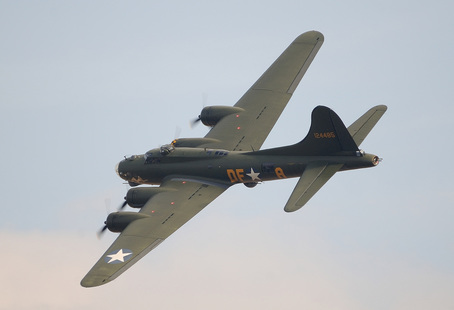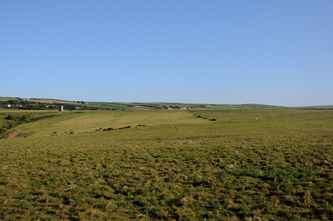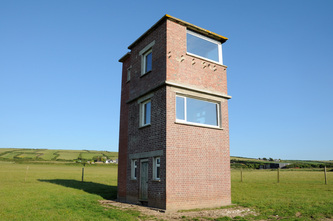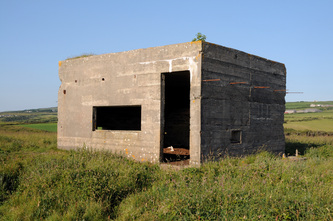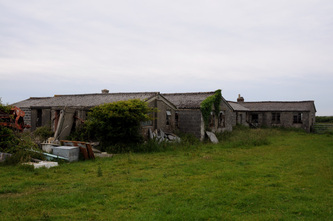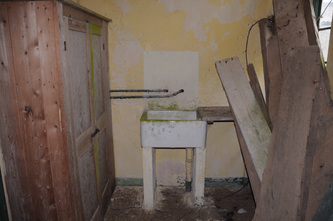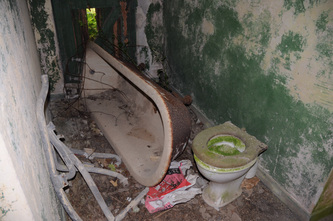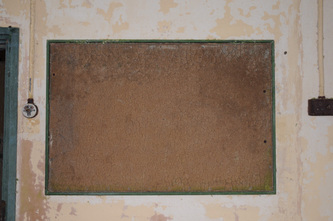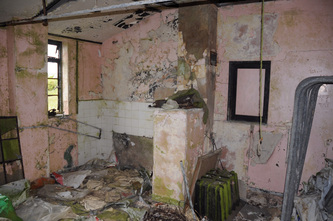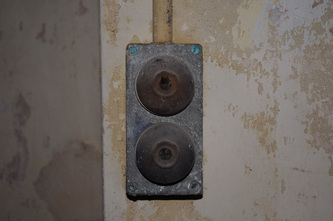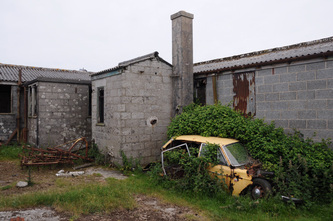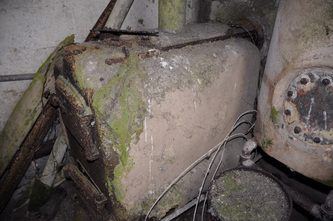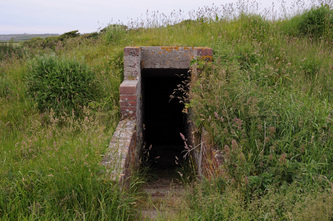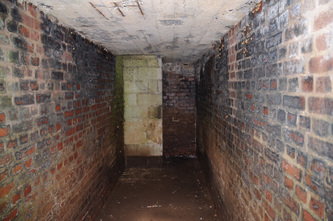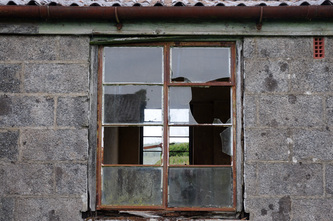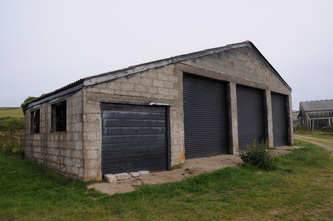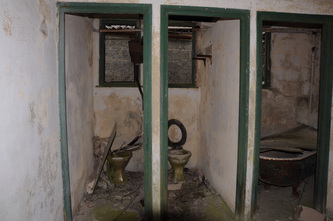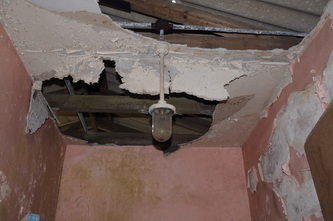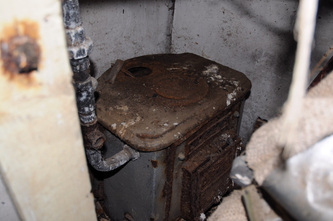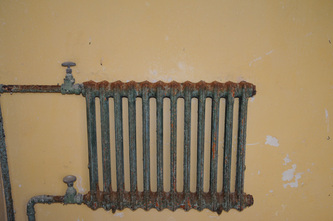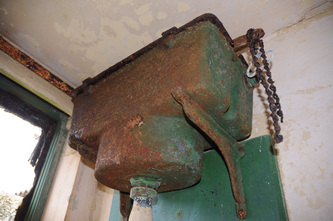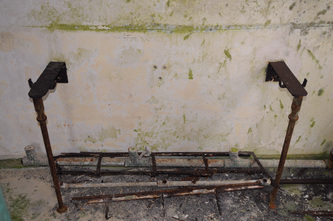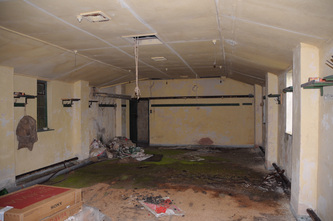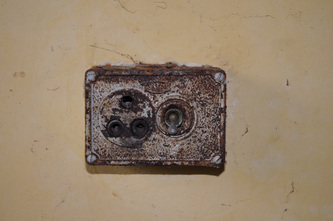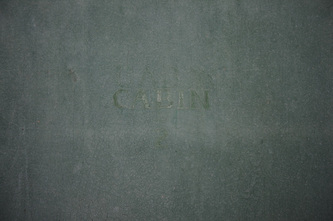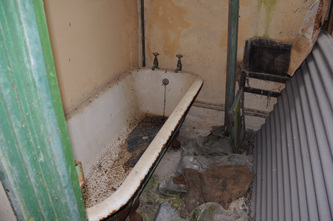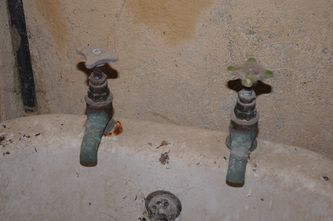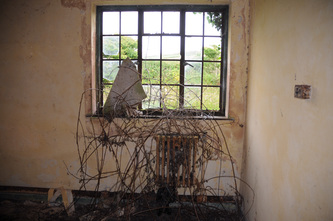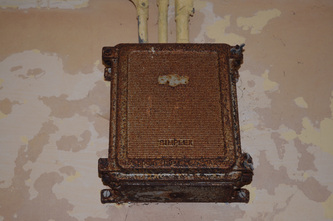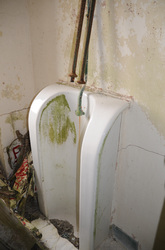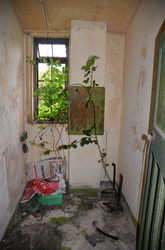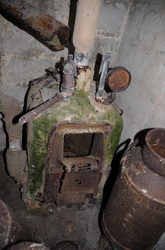Treligga (HMS Vulture 2)
Treligga is located on the North Cornwall coast and was primarily an aerial bombing and gunnery range. Treligga was officially named HMS Vulture 2 being that it was a satellite of HMS Vulture located at St Merryn Airfield. Pre-war, Treligga was a gliding site, it was then selected by the Fleet Air Arm in 1939 to become an air to ground and air to sea firing range.
Due to a lack of suitable emergency landing grounds in the area, Treligga was also used as a wheels up landing strip. Three grass landing strips were designated each being 650 metres long.
Several buildings were constructed on the site, one of which was a control/observation tower that was some 10 metres in height. A heavily reinforced concrete observation bunker was constructed near to the coastline. This housed quadrant equipment that recorded the angle of dives and accuracy of attacks made by aircraft. Both of these structures remain along with accommodation blocks.
In its early life, the base was run entirely by WRENS. Squadrons using the range included Fighter Pool 748 and School Of Air Combat 736 Squadron. Frequently seen aircraft were Seafires, Masters, Fireflies and Barracudas.
Due to a lack of suitable emergency landing grounds in the area, Treligga was also used as a wheels up landing strip. Three grass landing strips were designated each being 650 metres long.
Several buildings were constructed on the site, one of which was a control/observation tower that was some 10 metres in height. A heavily reinforced concrete observation bunker was constructed near to the coastline. This housed quadrant equipment that recorded the angle of dives and accuracy of attacks made by aircraft. Both of these structures remain along with accommodation blocks.
In its early life, the base was run entirely by WRENS. Squadrons using the range included Fighter Pool 748 and School Of Air Combat 736 Squadron. Frequently seen aircraft were Seafires, Masters, Fireflies and Barracudas.
|
One aircraft to use the landing ground was a USAAF 8th Air Force Boeing B-17 Flying Fortress that was in trouble and needed to get to ground quickly. The B-17 crew did not know where they were but spotted a landing site which was Treligga. They were unsure if they were over England or Occupied Europe so upon landing were very cautious of their reception. The WRENS drove out to greet the Fortress and were somewhat surprised to see the aircraft's guns tracking tracking them as they neared the aircraft. |
The B-17 crew were equally surprised and probably somewhat pleased, to find the base being run by WRENS. The B-17 was repaired and eventually left the base by being stripped down and successfully taking off over the sea.
As the war in Europe started to come to an end, Treligga was altered so to resemble Japanese held territory. Real and dummy tanks, a bridge and road convoy were put in place on the range. A railway was also constructed to provide moving targets. From December 1944 Treligga was being used to train Squadron Commanders and Senior Pilots of units destined to serve in the Pacific Fleet.
After the war Treligga continued in use as a range with aircraft such as Fairy Gannets and Avro Shackletons making use of the facilities. The range finally closed in 1955 and has now returned to farm land. The shots in this report were taken in June 2010.
After the war Treligga continued in use as a range with aircraft such as Fairy Gannets and Avro Shackletons making use of the facilities. The range finally closed in 1955 and has now returned to farm land. The shots in this report were taken in June 2010.
